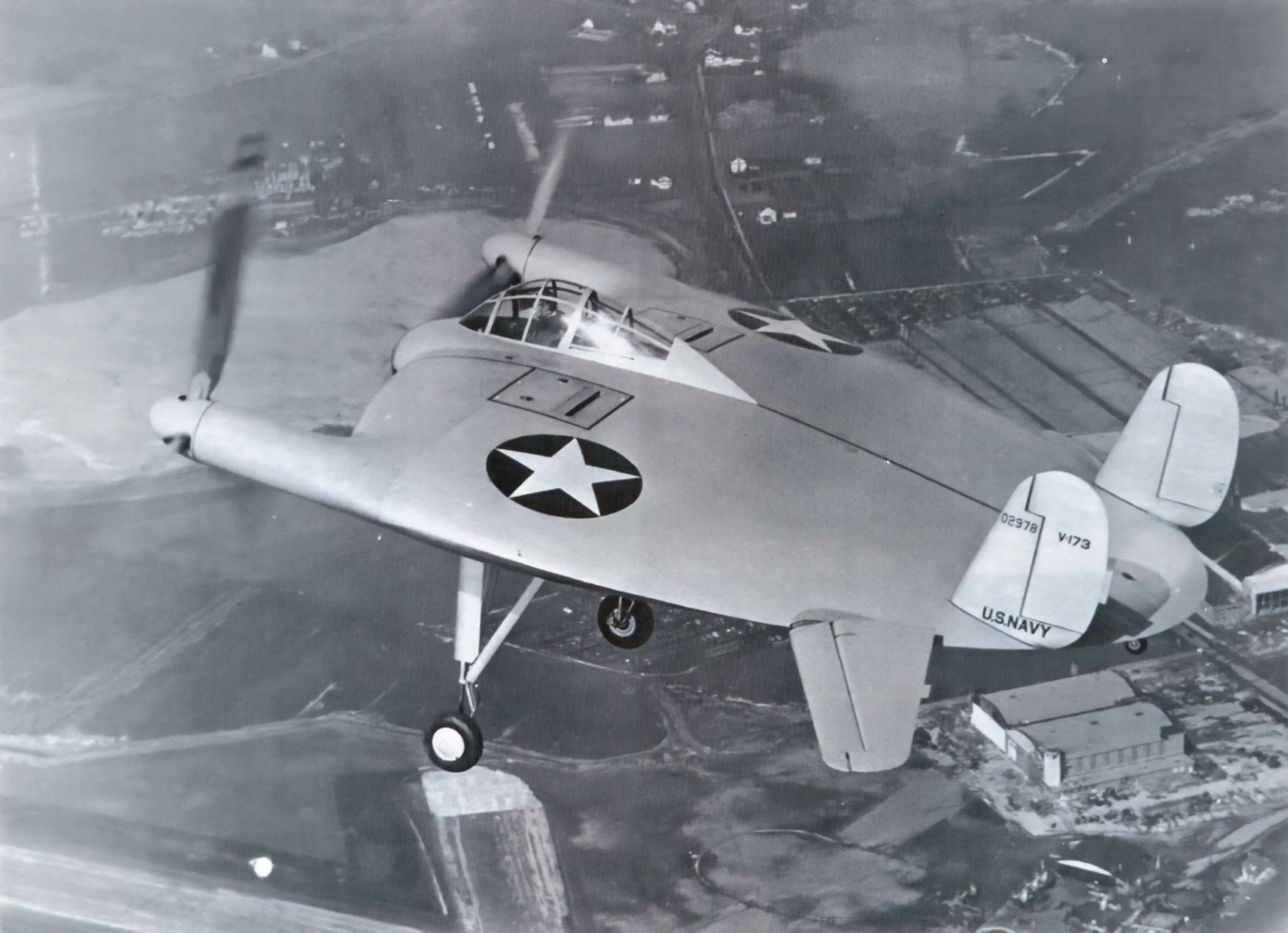The Vought V-173 Flying Pancake was an innovative aircraft design during the early 1930s. Conceived by aeronautical engineer Charles Zimmerman, it featured a unique discoidal shape with two large counter-rotating propellers to ensure uniform airflow over the airplane, aiming to eliminate the drag of wingtip vortices. Despite the promise shown in models, Zimmerman faced challenges with underpowered engines on initial concepts, leading him to join Vought Aircraft in 1937. The V-173 was built mostly from wood and canvas but later incorporated aluminum in some areas. Equipped with two C75 Continental 80-horsepower engines, this aircraft underwent initial testing and was well-received for its design that included features like vertical and horizontal stabilizers functioning as both ailerons and elevators.

During World War II, the U.S. Navy showed interest in the V-173 due to its short takeoff capability ideal for carrier-based operations. This led to the aircraft's first flight in November 1942, piloted by Boone Guyton. Despite control challenges and vibrations from its gearbox, the aircraft demonstrated almost stall-proof capabilities during its subsequent test flights. Charles Lindbergh also commended its low-speed maneuverability. A notable incident involved a beachside emergency landing where the plane flipped, yet resulted in no injuries or significant damage. The promising design prompted further development into the XF5U Flapjack, a more advanced aluminum-structured aircraft with intended armament capabilities, though difficulties with articulated propellers eventually led to project cancellation in 1947.
The Vought V-173 and its successor XF5U were innovative initiatives in aerodynamic design despite their ultimate cancellation. The experimentation with these aircraft provided valuable insights into disc-shaped wing designs and their potential applications. The development of these aircraft paved the way for future flying wing designs that have achieved success, such as Northrop's B-2 Spirit. Today, the restored V-173 is displayed at the Frontiers of Flight Museum, preserving a unique chapter in aviation history. To read more about the fascinating story of the Vought V-173 Flying Pancake, check out the full article V
No comments:
Post a Comment